Black Lion Audio on its approach to fusing modern technology with classic hardware
We sit down with Black Lion Audio CEO Nate Bierdeman to discuss how one company can help make other companies sound a lot better…
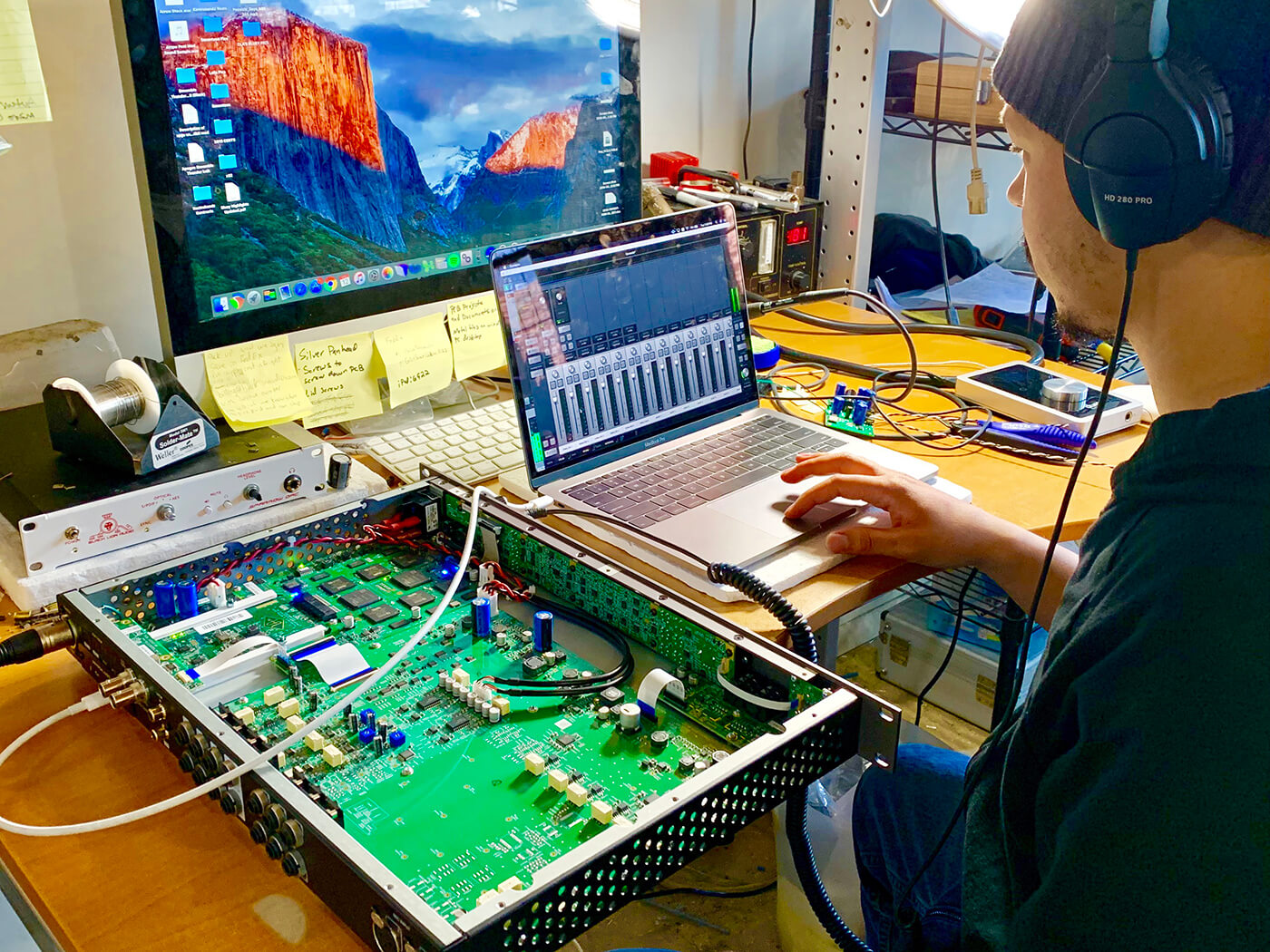
It used to be that if you weren’t getting the best performance out of your audio interface, then the only solution was to sell it and buy a new (and usually more expensive) solution. That scenario might well have changed, because there are now specialist companies such as Black Lion Audio that can take an increasing number of interface models and modify them; that is, increase the performance by replacing existing components with better-quality ones. They are the superchargers of the audio industry.
The company claims to be able to mod interfaces by everyone from Behringer to Universal Audio, Apogee to Antelope – and has published its own listening test results to back this up, often raising audio quality by very audible and obvious degrees. But before we get too far into the fascinating science of modding, we should also touch on Black Lion Audio’s own extensive range of outboard gear, often reimaginings of classics, where it has taken a vintage design and added its own unique twist.
Indeed, it was the company’s experience gained while modifying gear made by other companies that gave it the confidence to launch this range, and the resulting products have scored incredibly well in MusicTech tests. Most recently, John Pickford bestowed a magical 10/10 on the Black Lion Audio Seventeen, stating: “Seventeen takes the classic 1176 design and provides several additional useful features for the modern recording engineer. It’s a legend reborn for the 21st century.”
Time to sit down with Black Lion’s CEO Nate Bierdeman to discover how tinkering with gear made by others has inspired a new range of future classics for the studio…
Hi Nate, so you didn’t start out by making your own hardware, but making existing hardware better?
That’s right, we started out trying to improve the sound quality of other company’s products. We discovered that we were able to take recording interfaces, replace components they used with higher quality components to make them sound better. This was around 2006, when online audio forums like the Tape Op forum really started to take off. We posted our discoveries on them and it caught like wildfire and that really started the company. A lot of home recording was taking off at the time and people wanted better sound quality without having to necessarily spend too much money to get it.
What were some of the early interfaces you modded?
One of the first was for the original MOTU 828 interface, and it expanded from there. One reason it took off back then was because, in order to use Pro Tools, you had to use the company’s hardware to access the software – that was [former PT developer] Digidesign’s model for many years. A lot of people wanted access to that DAW and they were pretty reluctant about having to use, for example, a Digidesign 002, so that became a popular model for us to mod. I personally have probably modded hundreds if not maybe over a thousand Digi 002s and 003s!
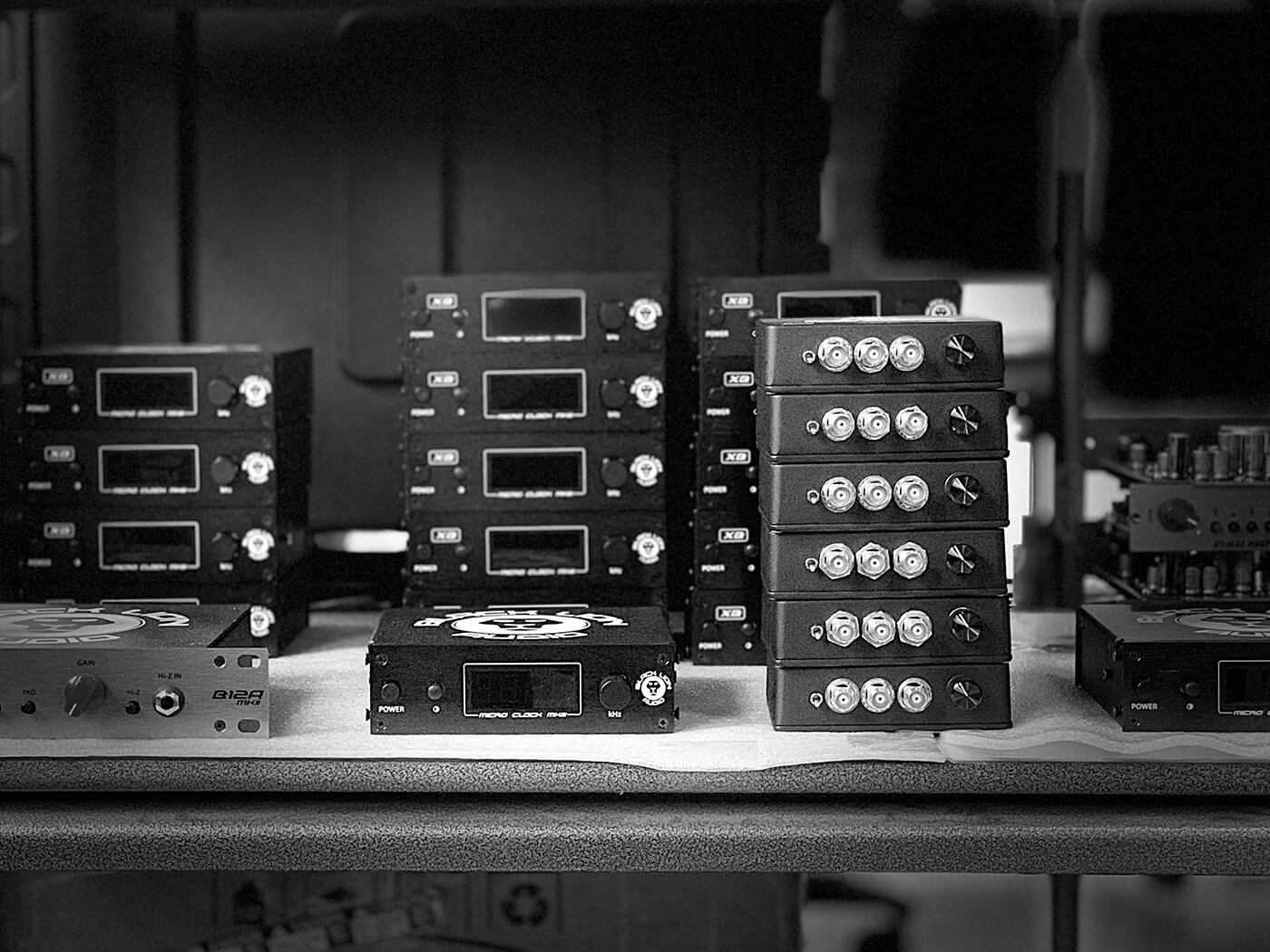
Can you modify any interface?
We aren’t a custom shop in that you can bring anything to us; instead, we mod a specific set of devices, all listed on the website. You can come to us through our website, after which you ship us your device by a scheduled date, and then our turnaround time is seven to 10 days – and we do this globally. The second option is to buy the interface from Sweetwater, book the mod, and have it drop-shipped from them to us. We’ll modify it and ship it direct to you, so that cuts out all the additional shipping time and costs.
What is a typical modding process?
We look at the analogue stages, the in and out of the interface, that’s the most important part – anything the signal actually passes through. It’s like the recording signal chain; you are interested in what mic you are using, what compressor you are using and so on. If you take that and make it much smaller, all of those stages are part of the analogue chain within a recording interface, and each component will have an effect on the sound. So we look at the analogue signal path going in, and make sure it‘s as high quality as possible going to the A to D, and then do the same thing on the way out through the D to A converter.
The other category is the actual conversion stages where we address power decoupling, which is how the power is being filtered for your D to A and A to D converters. The backbone to the whole system is the power supply and we want to make sure those DC power rails are as clean as possible. We also look at the wordclock. Not all of our modifications include it, but those where we offer a new internal wordclock benefit greatly from it.
Are there companies whose interfaces you haven’t managed to improve?
Yes, sometimes we’ll get a device in, usually a lower price-point item and there is not much we can do to them to improve sound quality. One major limitation is with an interface powered by the USB buss and with no external power supply. That means they are probably running on 5v rails on the analogue stages, which is already a huge bottleneck in terms of what we are able to do. And if it’s MFI certified, meaning it works with Apple devices where you can record right onto an iPad or an iPhone, the bit restriction is current draw. We use components in our mods that might use a bit more current and it will throw errors on an MFI device.
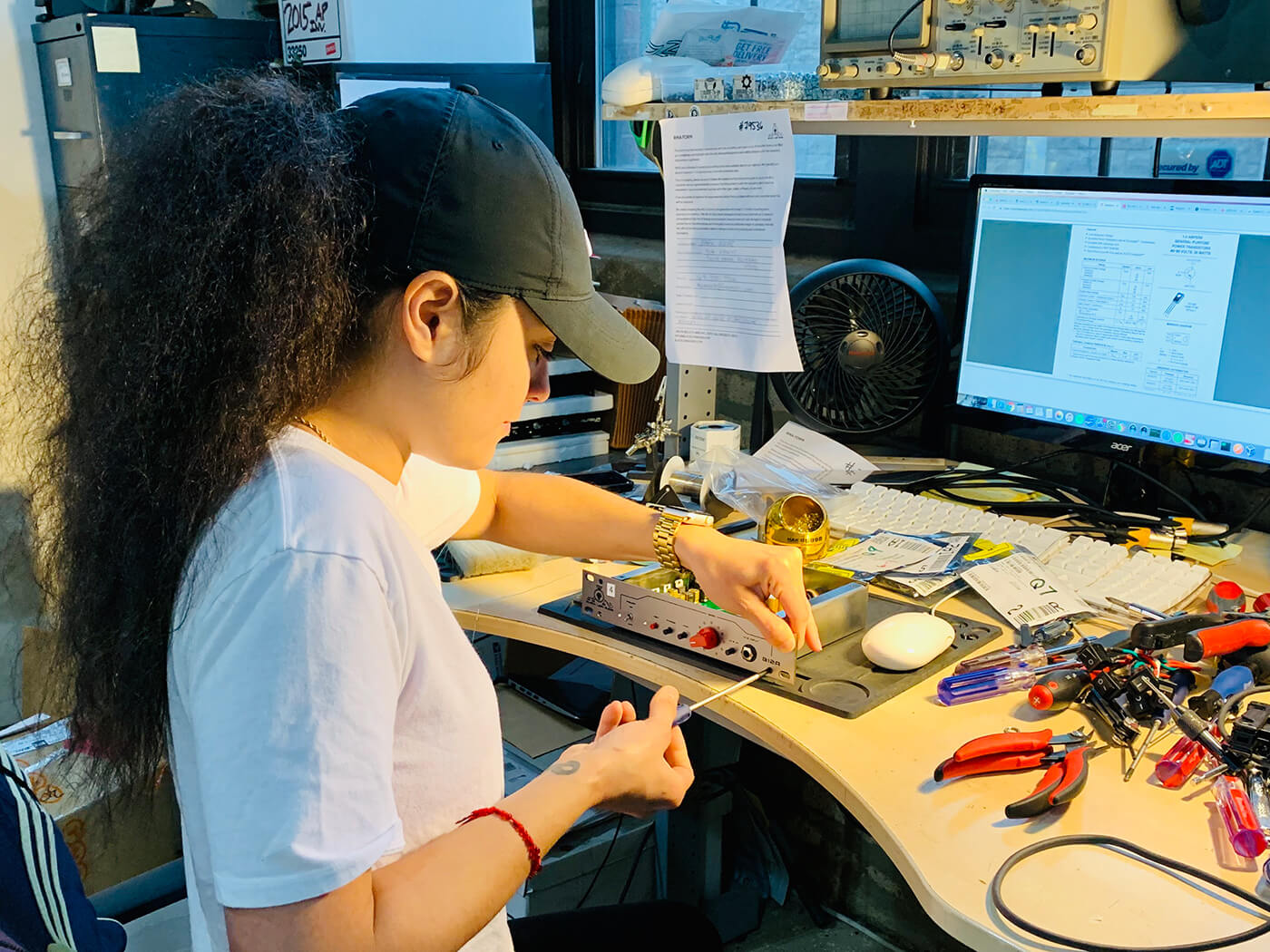
What about at the higher end? Is there any gear that sounds so good, you can add nothing to it?
Within reason, yes. We’ve definitely got devices in where we’ve modified it and it’s like splitting hairs between the results, so we don’t offer those mods at all and only offer mods to devices where we hear a big difference when we A/B them. Years ago with Fractal Audio, the guitar-processing company, we checked out one of their models and the analogue stages were super clean, everything was really well done. I personally have a Kemper, which is along those lines and also really well done. We offer a Line 6 Helix mod where they did a phenomenal job on the hi-Z input, the DI, but we were able to offer a lot on the output side where we were able to modify it, so within the same device there is room for improvement somewhere else. There are also certain brands that we don’t bother with because their price point is so high already that to entice people to spend an additional amount is too hard to do.
How do we know when something has been modded by you guys and how much does it typically cost?
We put a branded sticker on the faceplate and do our best not to cover anything like the artwork up. We also record the serial numbers when we get them in, because obviously, it’s easy to take a sticker off one device and put it on another and claim that one’s been modified and sell it as a premium, which we’ve seen happen before! In terms of cost, a lot of the mods that come through go for maybe $575 and then we get premium mods in that are up to $2,500.
Moving into hardware
Now you have applied that modding expertise to your own line of outboard hardware…
Little by little, the mods went from chip replacements on the inputs and outputs to much more complex modifications. It opened up this whole new field of discoveries, especially on the digital conversion side and from there, it just made sense to take some of these discoveries and develop our own product line. Products like Seventeen have been very successful. Everyone loves FET compression, but there are so many clones on the market that we decided to do something a little bit different with it. You gave it your MT Excellence Award and we were pretty pleased about that – it’s been our most popular product in the last two years. Our master word-clocks have also been very successful. We have three models on the market ranging from $299 to $999 and they have all sold well, to everyone from bedroom studios right up to big recording facilities and now in the live sound world.
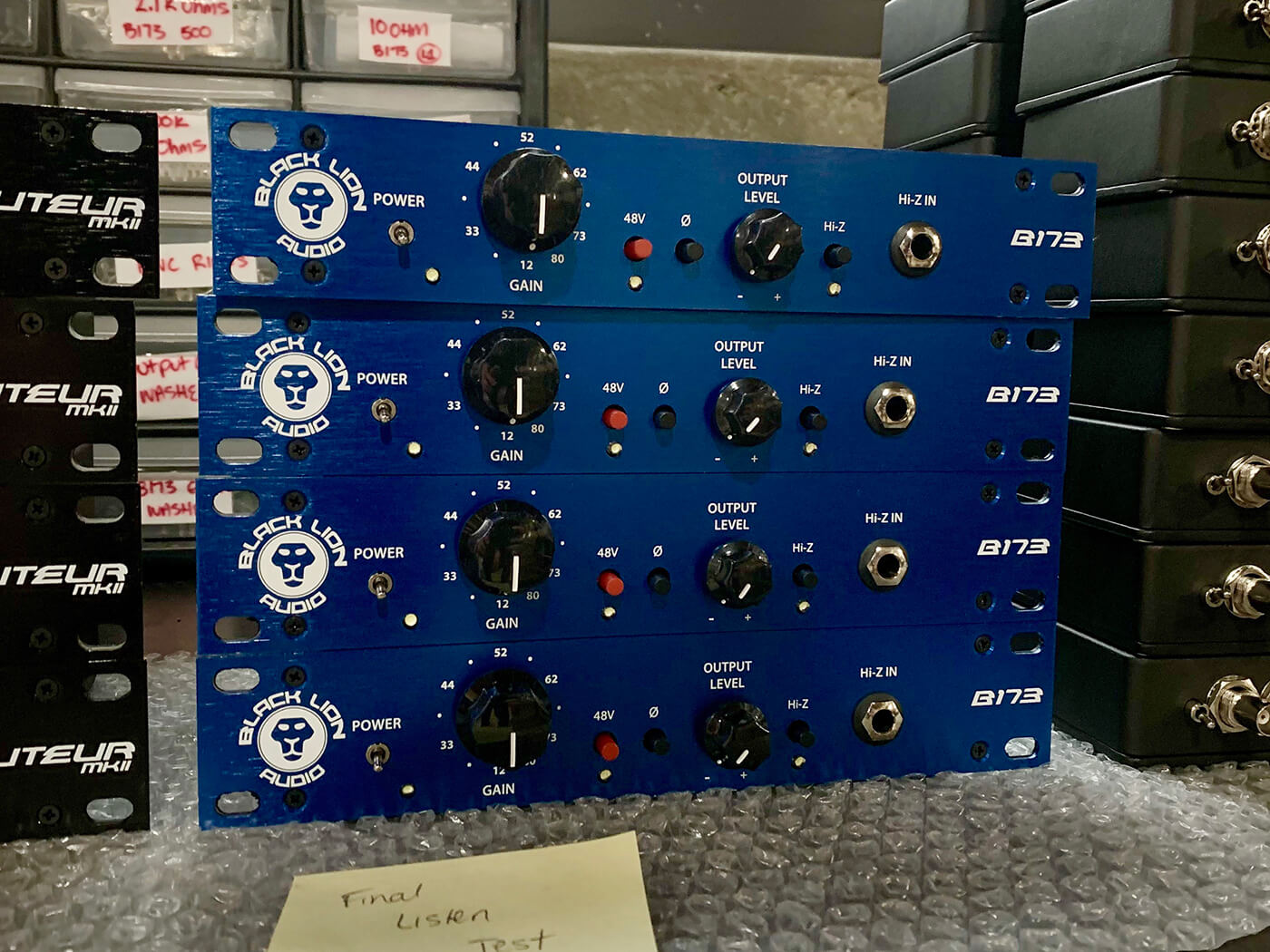
But you’re not just cloning vintage designs, right?
We’re not a clone company. We do homages to classic gear and there are many reasons for that. If you are just copying a design, then anyone can do that, so it becomes a race to the bottom, about purchasing power where you buy enough components all at one time to drive the costs lower. That’s how you win in the clone market. But if you’re doing something that is a variation on a theme, it becomes much more interesting and you can grab people’s attention. For example, the Seventeen is basically a Frankenstein 1176! It’s got a bunch of different revisions in there and stuff that has never been done to an 1176 before, at least commercially. So we try to tip our hat to these people who came before and say ‘thanks’, but also ‘let’s try and take this to the next level’.
The B173 Quad, which is our new 4-channel preamp, is heavily based on a 1073 design, but instead of doing 80dB of gain and having a high noise floor, we only have 70dB of gain and were able to lower the noise floor by 15dB. It’s also got a better higher frequency response, so sounds more ‘modern’ as a result of that and that’s what we do here.
Which products do you have coming up that you can talk about?
At Summer NAMM, we showed the B172A for the first time. It’s a 2U chassis where one side is a FET compressor and the other side is an opto compressor. You are able to route from the FET into the opto or the other way around with the flick of a switch. That’s a classic chain in the recording world and people argue which is best, so we thought we’d put one of each in one box! You can also use them as two independent mono compressors. On the opto side, our design engineer Jesus Ortiz designed his own element called the T4BLA and that’s going to be the first component that is not only in that device but that you can buy separately and put it in an LA2A that you own.
We also have the Bluey coming out. Chris Lord-Alge, the famous mix engineer, has a bunch of 1176 Blue Stripe compressors that he loves, but one sounds better to him than the rest, which he calls ‘Bluey’. He’s used it on the lead vocal track on more than 15,000 mixes because it just sounds better than all the others, so he asked us to go to LA to figure out why.
Jesus went to LA and opened it up, mostly by accident. Over the last 30 to 40 years, as techs fixed Chris Lord-Alge’s Bluey, they didn’t have the exact-value components that were part of the original design and, little by little, they had modified it, basically by accident! It made it more forward and a little more mid aggressive than the other Blue Stripes. So we have taken that and replicated it with our own Bluey. We added a wet/dry mix so you can put the compressed signal in parallel with the uncompressed signal and there’s a stereo link around the back, so that’s new and will be out soon.
What about synths?
With an obvious electronic expertise at BLA, has the company ever thought about entering the realms of modular synthesis and offering mods of more instrument-based gear?
“Definitely,” says Nate. “I can’t say I’m an out-and-out synth nerd, but it’s a direction I’ve been wanting BLA to go in for years, but haven’t found the time. A customer contacted us with an Akai MPC X and were able to mod that, so that was our first digital-instrument modification that wasn’t just a pure interface mod. I’ve got an original Blue Marvin ARP 2600, a Prophet-6, a Yamaha CS-5, a Dave Smith Tempest… so I’m into that synth stuff and I’d love to continue heading in that direction.”
Better sounding gear
Obviously, Black Lion Audio’s success at making other audio companies’ gear sound better is a double-edged sword. On the one hand, it has done them a favour, but in doing so, the process may have perhaps also highlighted deficiencies in the original design. So what reaction does BLA get from such companies?
“I think there’s a little bit of a love-hate relationship there!” Nate laughs. “We’re like the new brother-in-law that just married into the family and they kind of don’t like us, but have to accept that we’re part of the family now – that’s the most recent analogy that I’ve heard!
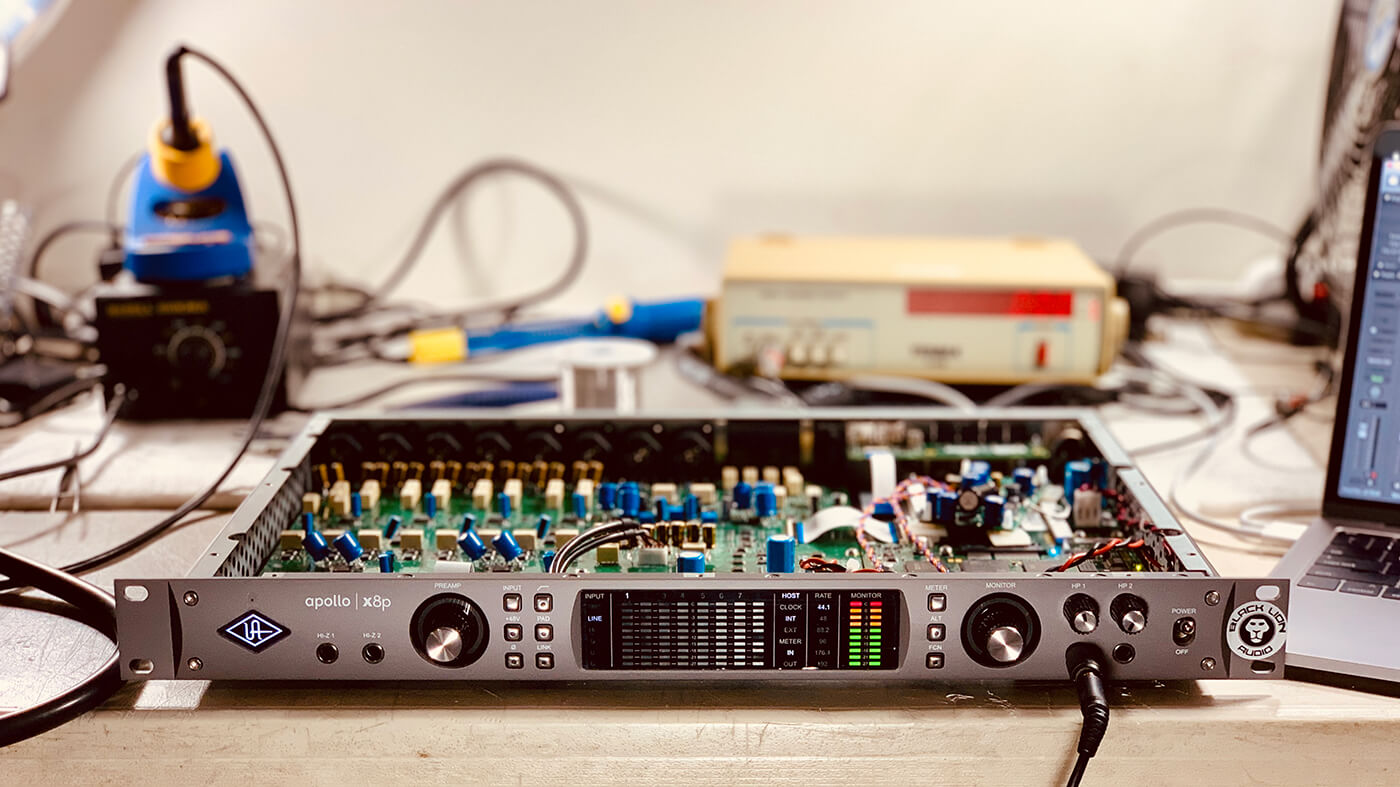
“I guess a better analogy is that if you look at Mercedes. They are developing luxury cars that appeal to a mass-market segment. There is also a certain percentage of that market that wants it to be high performance and are willing to spend a premium, so they’ll get it modified and get a more performance piece, and that’s where we fit in in the recording world. Some products are developed to reach as large a market as possible but, within that, there might be five percent of those customers who actually want this thing hot-rodded to as high a performance as possible. When you are spending $2,500 on an interface, you want to get some mileage out of that, right? You want it to last as long as possible and be as high quality as possible and people are willing to spend a premium to get that. If the manufacturer were to offer that in the first place, its price would be driven so far up that their potential market reach would be drastically reduced.”
To learn more about Black Lion Audio products, visit its website. For more interviews, check here.